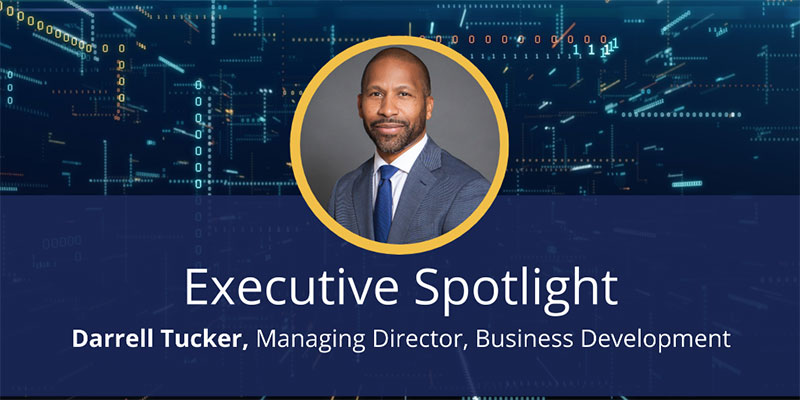After spending 21 years working in IT and project management in the investment management industry, what attracted you to Siepe?
Siepe is at the forefront of the technology revolution – this is what really hooked me. Several years ago, Siepe saw potential in the public cloud that other people couldn’t. Everyone was talking about the cloud, especially the private cloud, and applying it in different ways. However, Siepe was already steps ahead of what people theoretically wanted to do. They were committed to the public cloud before it was fully adopted across the industry.
What’s the key differentiator of Siepe compared to your past experiences?
Agility. The fact that Siepe is open-minded about what’s being developed across the industry and what new technology is on the horizon makes us less likely to become stagnant. It’s truly a great quality to have in IT because it is always evolving. Some providers might stick to a strategy because it’s worked well for the business, but Siepe is agile enough to adapt to new approaches that may better serve the business and its clients. And what’s more is that Siepe operates with a software development background, helping clients with development operations and automating key processes such as code deployment and data science needs (R, Python, Shiny, etc.).
Siepe was built to address the technology needs of asset managers and now more than ever, we’re seeing the increased demand for robust cloud-based infrastructure in the remote work environment. In your opinion, how will adoption of cloud-based technology progress over the next five years?
The industry was, undoubtedly, already heading in that direction, but two major events have further forced the evolution of the technology landscape in recent years: Hurricane Sandy and the COVID-19 pandemic. These exposed a lot of the weaknesses of traditional technology setups, which influenced the shift to cloud outsourcing. It was the confirmation businesses needed to commit to fully adopting the public cloud.
With that said, there’s still room for more adoption over the next few years, particularly among larger firms who may still have traditional IT infrastructure. They have already invested a lot of time and money into their IT infrastructure, and traditionally wanted to have more control over their technology landscape. They will need to figure out how to make the best use of those technologies to move forward in a post-pandemic world. I do believe they will come around to working with outsourced providers, at least for some functions.
As we continue operating in a remote work environment, many managers will need to consider the implications of technology on their overall business efficacy. Larger firms will likely leverage a managed services provider (MSP) to bridge the transition back to some sense of normal operations more efficiently.
What do you think are the key considerations for firms when choosing an outsourced technology vendor?
Infrastructure and the processes around it are key and often overlooked. If the infrastructure (servers and network) is up and running and working well, then no one really thinks twice. If it works, it works. However, having a sound solution that is configured and monitored correctly is critical for the long-term.
Service is the next key requirement. Your provider should be staffed with experts in both technology and business processes who can provide end-user support whenever and wherever needed.
You need to consider cost and the value proposition. Evaluate the complete solution. Are you receiving all of the things that are complementary to your business?
And last – but by no means least – compliance. Choosing the right technology vendor who operates with compliance and regulatory standards in mind makes it much easier for your business to prepare for regulatory requirements.
Your technology partner should be more than just an MSP, but ultimately an extension of your business handling all technology and data needs, including data management, development operations and supporting quantitative data science efforts.
How has the COVID-19 pandemic impacted your experience at Siepe so far, particularly in how you’ve approached your new role and goals?
Fortunately, despite the wider disruption caused by the pandemic, my experience has been extremely positive. While I miss the social interaction, I’ve been very productive working remotely. It’s also helpful that everyone else is also working remotely. It validated what I already thought to be true about Siepe: the company was nimble enough to deal with any disruption. Siepe was already fully equipped for remote working, both for staff and clients. The technology is integrated so well that we’re able to continue operating as if this was already the norm.
What’s the best part about working at Siepe?
While there are a number of things I enjoy/appreciate, the best part about working at Siepe is the exposure to new technologies, as well as the autonomy we have. You don’t feel restricted – it’s an open environment where we’re able (sometimes encouraged) to explore new ways of doing things.
Where do you see Siepe in 12 months’ time?
In 12 months’ time, I see Siepe as a leader in the MSP space given our expertise in the public cloud, our capabilities in the remote/hybrid work environment, and our ability to deliver a full product suite, including IT infrastructure and software solutions. Siepe has a compelling software platform that adds value to business processes. It is a tool that can be leveraged by firms to optimize their fund operations. Having all these functions under one roof with Siepe is much more efficient than trying to piece together a patchwork of different vendors for multiple purposes.
When you think about it, a lot of business processes are driven by technology, whether it’s order management systems, execution management systems, portfolio management systems, or fund administration. Who better to help integrate those solutions than your technology services provider? That is a key differentiator for Siepe and also the piece that will propel us forward to help businesses implement best-in-class solutions.

